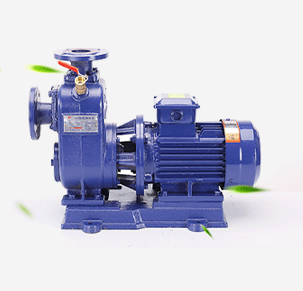English
- Afrikaans
- Albanian
- Amharic
- Arabic
- Armenian
- Azerbaijani
- Basque
- Belarusian
- Bengali
- Bosnian
- Bulgarian
- Catalan
- Cebuano
- Corsican
- Croatian
- Czech
- Danish
- Dutch
- English
- Esperanto
- Estonian
- Finnish
- French
- Frisian
- Galician
- Georgian
- German
- Greek
- Gujarati
- Haitian Creole
- hausa
- hawaiian
- Hebrew
- Hindi
- Miao
- Hungarian
- Icelandic
- igbo
- Indonesian
- irish
- Italian
- Japanese
- Javanese
- Kannada
- kazakh
- Khmer
- Rwandese
- Korean
- Kurdish
- Kyrgyz
- Lao
- Latin
- Latvian
- Lithuanian
- Luxembourgish
- Macedonian
- Malgashi
- Malay
- Malayalam
- Maltese
- Maori
- Marathi
- Mongolian
- Myanmar
- Nepali
- Norwegian
- Norwegian
- Occitan
- Pashto
- Persian
- Polish
- Portuguese
- Punjabi
- Romanian
- Russian
- Samoan
- Scottish Gaelic
- Serbian
- Sesotho
- Shona
- Sindhi
- Sinhala
- Slovak
- Slovenian
- Somali
- Spanish
- Sundanese
- Swahili
- Swedish
- Tagalog
- Tajik
- Tamil
- Tatar
- Telugu
- Thai
- Turkish
- Turkmen
- Ukrainian
- Urdu
- Uighur
- Uzbek
- Vietnamese
- Welsh
- Bantu
- Yiddish
- Yoruba
- Zulu
Telephone: +86 13120555503
Email: frank@cypump.com
Oct . 11, 2024 05:36 Back to list
sewage ejector tank
Understanding Sewage Ejector Tanks A Comprehensive Overview
Sewage ejector tanks play a vital role in the effective management and disposal of wastewater, particularly in residential, commercial, and industrial settings where gravity drainage is not feasible. As the name suggests, these systems are designed to “eject” sewage and wastewater from areas below the level of the municipal sewer line, ensuring that waste is properly transported and treated.
What is a Sewage Ejector Tank?
A sewage ejector tank, often referred to as a sewage pump station, is a submerged collection tank equipped with a pump system. This tank collects sewage and greywater from bathrooms, kitchens, and laundry rooms that are positioned below the main sewer line's elevation. Once the wastewater reaches a specific level in the tank, the pump is activated to push the waste upward and into the central sewer system.
The Components of a Sewage Ejector Tank
The typical sewage ejector system comprises several key components
1. The Tank Usually made from durable materials like polyethylene or fiberglass, the tank's size can vary based on the volume of sewage it needs to handle. It is designed to withstand the weight of the soil and water above it.
2. The Pump This is the heart of the ejector system. Sewage pumps are specially designed to handle solids and debris in wastewater. They can be submersible or non-submersible, depending on installation preferences.
3. Float Switches These devices monitor the wastewater level within the tank. When the level reaches a predetermined height, the float switch activates the pump to eject the contents.
sewage ejector tank

5. Check Valve Positioned in the discharge line, this valve prevents backflow of sewage into the tank after pumping.
Installation Considerations
Installing a sewage ejector tank requires careful planning and consideration of various factors, including local building codes, soil conditions, and proximity to existing sewer lines. The tank must be placed in a location where it can easily collect waste from the plumbing fixtures it serves. Proper drainage and ventilation are also crucial to the system's functionality and longevity.
Maintenance and Care
Regular maintenance is essential to keep a sewage ejector tank functioning efficiently. Homeowners should routinely inspect the pump, float switches, and surrounding area for any signs of blockages or malfunctions. Cleaning the tank periodically can also prevent build-up of sludge and minimize odors. Additionally, it is advisable to have a professional evaluate the system annually to ensure that it meets all operational standards.
Environmental Impacts
Sewage ejector tanks contribute significantly to wastewater management, particularly in areas lacking comprehensive sewer systems. By efficiently transporting waste, these tanks reduce the risk of environmental contamination from overflowing sewage, which can pose health risks to both humans and wildlife. Proper installation and maintenance further enhance their environmental benefits.
Conclusion
In summary, sewage ejector tanks are indispensable systems that facilitate the safe and effective management of wastewater in situations where gravity alone cannot transport sewage to treatment facilities. By understanding their components, installation requirements, and maintenance needs, property owners can ensure that their ejector systems function reliably for years to come. As urban areas continue to grow, the importance of such systems in maintaining public health and environmental integrity cannot be overstated. Whether for a single-family home or a larger commercial property, investing in a quality sewage ejector tank system is a smart decision for sustainable wastewater management.
-
ISG Series Vertical Pipeline Pump - Chi Yuan Pumps Co., LTD.|Advanced Hydraulic Design&Energy-Efficient Solutions
NewsJul.30,2025
-
ISG Series Vertical Pipeline Pump - Chi Yuan Pumps Co., LTD.
NewsJul.30,2025
-
ISG Series Vertical Pipeline Pump - Chi Yuan Pumps Co., LTD.|energy-efficient fluid handling&industrial durability
NewsJul.30,2025
-
ISG Series Vertical Pipeline Pump - Chi Yuan Pumps | Advanced Engineering&Industrial Efficiency
NewsJul.30,2025
-
ISG Series Pipeline Pump - Chi Yuan Pumps | High Efficiency, Energy Saving
NewsJul.30,2025
-
ISG Series Vertical Pipeline Pump-Chi Yuan Pumps|High Efficiency&Reliable Performance
NewsJul.29,2025










